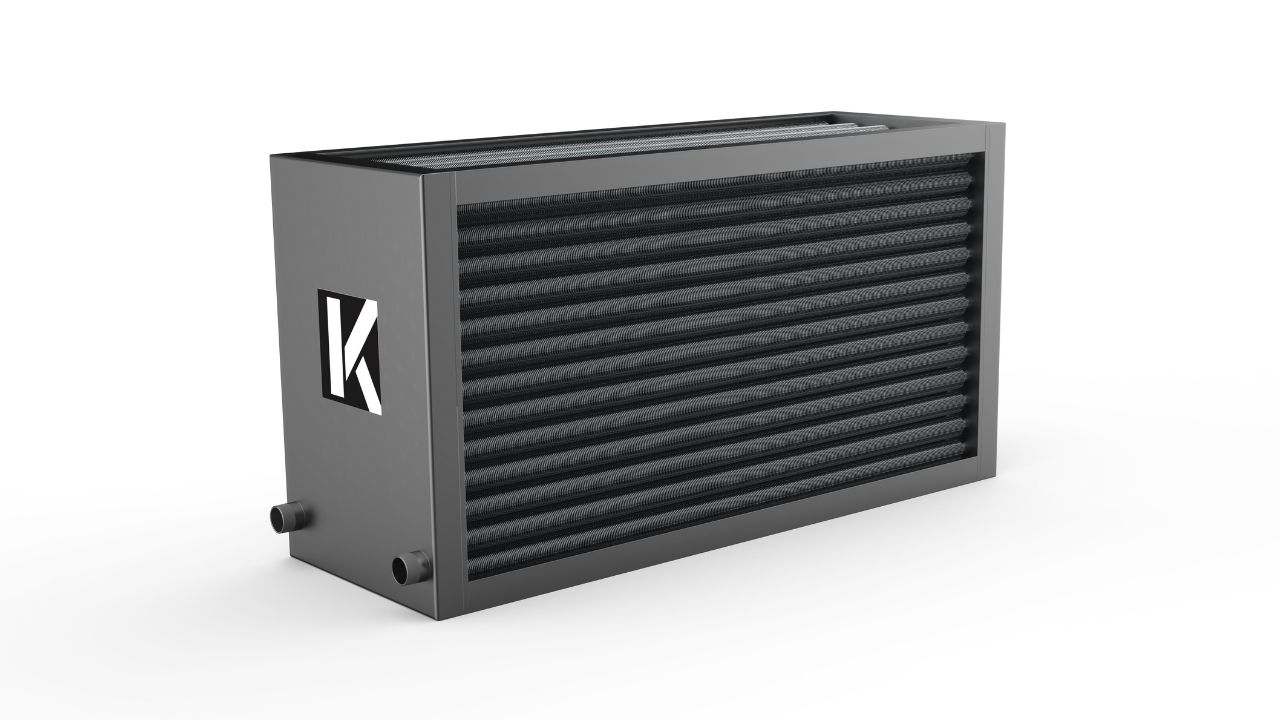Contact us for information and requests about Erk Proses high performance hot oil radiators designed for industrial applications.
Hot Oil Radiator is a type of heat exchanger used to facilitate heat transfer in industrial systems operating at high temperatures. Hot oil radiators are used to heat the air exposed to forced flow from outside the tube suitable for process requirement by utilizing the energy of the hot oil fluid within the tubes. Hot oil radiators operate with thermal fluids known as "hot oils," which operate at high temperatures.
Since the properties of the oils used in the thermal design of a hot oil radiator may directly affect flow-induced pressure drops, flow dynamics; and indirectly affect the radiator capacity and heat transfer surface area that may be needed for transfer of required heat energy.

Some of the oil properties listed below play an important role in the design process:
- Temperature Range: Hot oils are special thermal fluids capable of operating at high temperatures. The operating temperature range of the oil used in radiator design will influence the selection of radiator materials and design considerations.
- Coefficient of Thermal Conduction: The heat transport capacity of hot oils is important. Oils with higher thermal transport capacity can offer more efficient heat transfer.
- Viscosity: Viscosity of the oil affects its fluidity and, consequently, heat transfer. Oils with lower viscosity flow more easily and ensure better heat transfer.
- Chemical Properties: The chemical properties of hot oils should be compatible with the environment they are used in. Particularly, resistance to corrosion is important.
Careful attention must be given to the selection of the hot oil for the process. Overheating or rapid cooling can cause to degradation of the oil's chemical composition and accumulation of deposits in the radiator. This can cause efficiency losses in the radiator or even result in the need for new oil due to chemical deformation of the oil used in closed-loop system, leading to additional costs.
Hot oil radiators used in processes requiring heating of air can be preferred in certain applications where steam fluid is used for several reasons:
- High Temperature: Hot oils can operate within higher temperature ranges than steam, making them suitable for meeting the high temperature requirements of systems that need heating.
- Low Pressure: Hot oil systems often operate at lower pressures. This can reduce energy costs and enable radiators to be made from more cost-effective materials.
- Thermal Stability: Compared to steam, hot oils have less thermal expansion during heating and cooling cycles. This contributes to the system's stability and prolonged operation.
Type and size of finned tubes used in hot oil radiators can vary based on specific applications and design needs. However, generally, tubes with smooth flow and effective fin design are preferred for efficient heat transfer. Additionally, materials capable of being resistant to high temperatures and having appropriate chemical properties should be used. Therefore, finned tubes should be selected and designed by experts based on specific application requirements.
